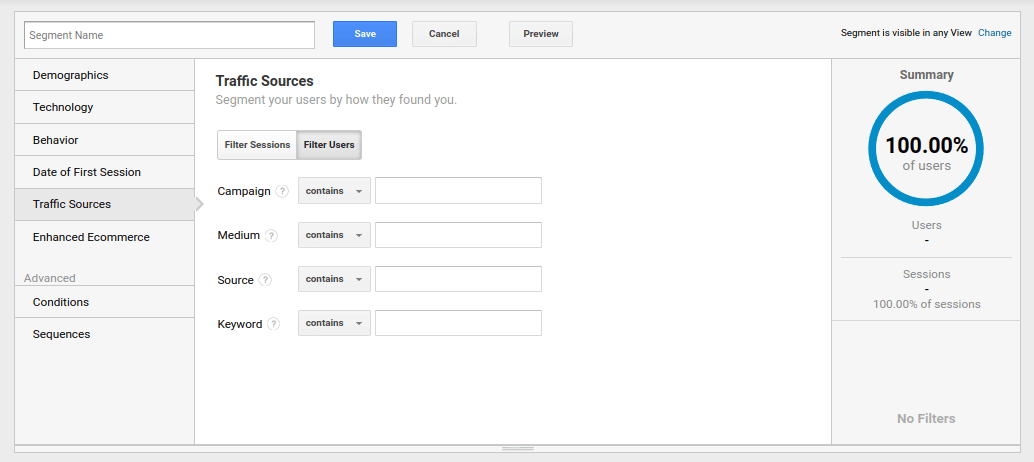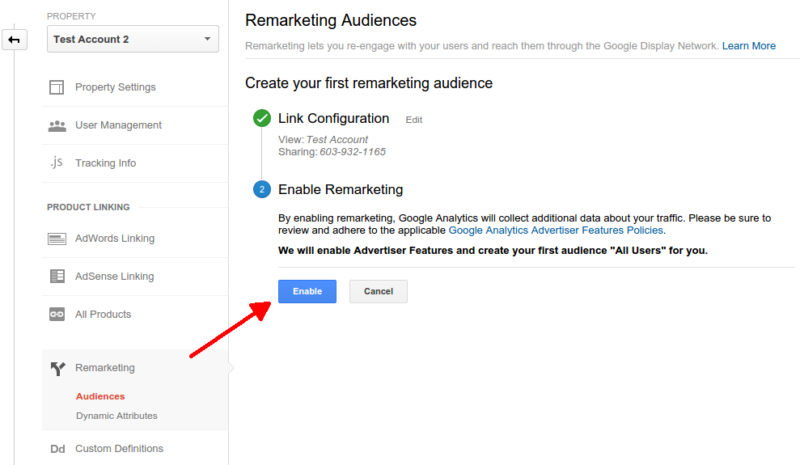Step-by-Step Tutorial: Remarketing In Google Analytics
Step-by-Step Tutorial: Remarketing In Google Analytics
Blog Article
Efficient Strategies for Remarketing in Google Analytics
In the realm of digital advertising, the realm of remarketing in Google Analytics stands as a critical tool for companies aiming to enhance their online visibility and conversion prices. With tactical target market division, customized remarketing listings, and appealing advertisement creatives, organizations can craft individualized projects that resonate with their target audience. The true success lies in the ability to continually fine-tune and maximize these techniques based on efficiency metrics and data understandings. By checking out the subtleties of vibrant remarketing and leveraging sophisticated tracking devices, businesses can open the complete capacity of their remarketing efforts, resulting in increased brand exposure and client engagement.
Audience Segmentation
Using target market segmentation is a pivotal approach in optimizing the efficiency of remarketing projects within Google Analytics. By separating your audience right into distinct groups based upon their behavior, demographics, or passions, you can customize your advertising messages to be a lot more appealing and appropriate. This strategy permits you to provide personalized ads to particular sectors, enhancing the possibility of conversion.

In addition, audience segmentation aids you comprehend the differing needs and choices of different consumer groups, permitting you to craft even more engaging ad creatives and deals. This targeted strategy not only boosts the effectiveness of your remarketing initiatives however likewise boosts general campaign performance.
Establishing Remarketing Checklists
To properly apply remarketing techniques in Google Analytics, the first step involves creating targeted remarketing listings based upon specific audience interactions. Establishing up remarketing checklists permits marketers to section their web site visitors into various categories based upon their behavior, such as web pages checked out, items looked for, or actions taken on the website. By defining these sectors, marketing experts can after that develop pertinent and individualized ads that target these certain teams, raising the probability of conversion.
Remarketing lists can be established up utilizing numerous requirements such as web page sees, duration of see, specific objective conclusions, and even details events caused on the website. This degree of modification enables marketing experts to tailor their promotions to match the interests and choices of each fractional audience, resulting in greater involvement and conversion prices.
In addition, remarketing lists can likewise be developed based on data imported from various other resources like CRM systems, permitting even more exact targeting. By establishing up these targeted remarketing lists, marketing professionals can effectively reach out to prospective consumers who have already revealed passion in their services or products, optimizing the influence of their remarketing campaigns.
Creating Compelling Ad Creatives
After segmenting web site site visitors right into targeted remarketing checklists based upon details target market communications, the following crucial step is to craft compelling ad creatives that resonate with each fractional group's preferences and interests. The efficiency of remarketing projects greatly counts on the capacity of these advertisement creatives to record the focus of the target market and drive them to take the preferred action.
To produce engaging ad creatives, it is necessary to comprehend the special attributes of each fractional team (What Is “Remarketing” In Google Analytics?). Tailoring the messaging, visuals, and offers to line up with the rate of interests and choices of the target market can significantly boost the chances of conversion. Making use of vibrant ads that instantly change content based upon the customer's behavior can additionally improve the customization of the ad experience

Monitoring Efficiency and Optimization
Efficient tracking of campaign performance and continuous optimization are crucial elements of successful remarketing strategies in Google Analytics. To make sure the effectiveness of remarketing campaigns, marketers have to consistently track crucial performance metrics such as click-through rates, conversion rates, and return on advertisement spend. By checking these metrics, marketing professionals can acquire useful insights into the efficiency of their campaigns and determine locations for improvement.
In Google Analytics, marketing experts can utilize tools like conversion monitoring and target market segmentation to analyze the performance of their remarketing campaigns. Conversion monitoring allows marketing professionals to track certain activities that users take after clicking on a remarketing advertisement, providing useful information on the effectiveness of the campaign in driving preferred end results. Target market segmentation, on the other hand, allows marketing professionals to separate their target market right into different segments based on various requirements such as demographics, habits, and rate of interests, allowing for more targeted and customized remarketing initiatives.
Constant optimization is essential for optimizing the influence of remarketing projects. Marketing experts should use A/B testing to experiment with different ad creatives, messaging, and targeting methods to determine one of the most efficient techniques. By consistently assessing project efficiency information and making data-driven optimizations, marketing professionals can guarantee that their remarketing campaigns are attaining the preferred outcomes and driving conversions successfully.
Leveraging Dynamic Remarketing
Utilizing dynamic remarketing can dramatically enhance the relevance and influence of targeted ads in Google Analytics. This advanced technique allows marketers to reveal individualized ads to users that have actually previously seen their site or have a peek at these guys utilized their mobile application. By dynamically showing services or products that the users have revealed rate of interest in, vibrant remarketing assists to maintain the brand name fresh in their minds and motivates them to return to finish an acquisition.
In addition, dynamic remarketing projects can be automated and maximized in real-time based on performance data, making certain that the ads continue to be reliable and relevant. my blog By leveraging dynamic remarketing in Google Analytics, advertisers can produce a lot more impactful and targeted ad campaign that reverberate with their target market and drive outcomes.
Conclusion
To conclude, effective remarketing techniques in Google Analytics include audience segmentation, targeted remarketing listings, engaging advertisement creatives, efficiency tracking, and vibrant remarketing. By concentrating on customized advertisements, data analysis, and continuous optimization, businesses can enhance conversion rates and drive engagement effectively. Leveraging tools like conversion monitoring makes sure that advertisements continue to be pertinent and tailored, leading to overall success in remarketing initiatives.
Via strategic audience segmentation, customized remarketing checklists, and interesting ad creatives, companies can craft individualized campaigns that resonate with their target audience. Utilizing dynamic advertisements that instantly change web content based on the visit this page user's habits can additionally enhance the customization of the ad experience.
Conversion tracking allows marketers to track details actions that users take after clicking on a remarketing advertisement, supplying important data on the performance of the campaign in driving desired end results.Using dynamic remarketing can considerably boost the relevance and influence of targeted ads in Google Analytics - What Is “Remarketing” In Google Analytics?.In final thought, efficient remarketing techniques in Google Analytics entail audience division, targeted remarketing listings, engaging ad creatives, efficiency monitoring, and dynamic remarketing
Report this page